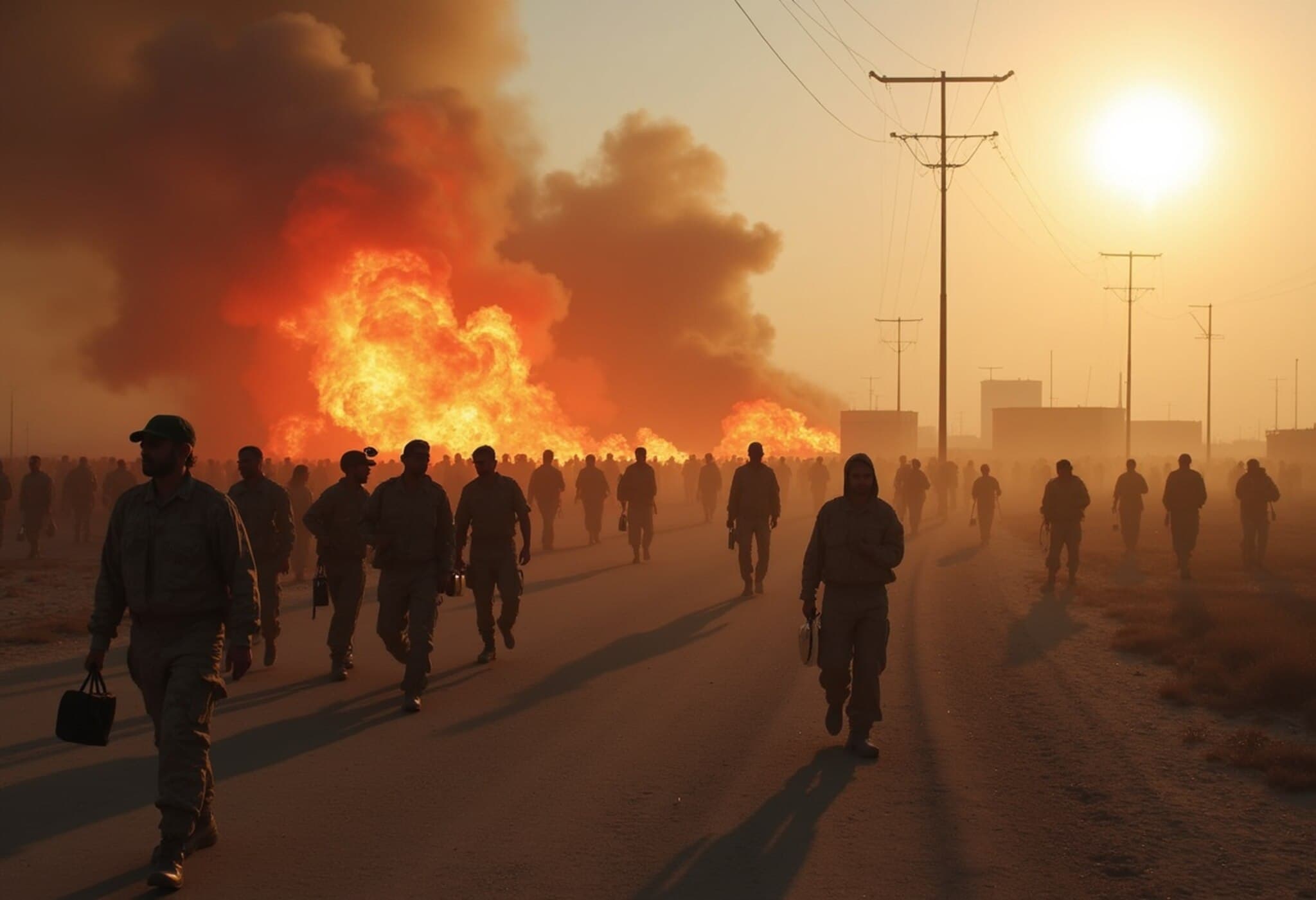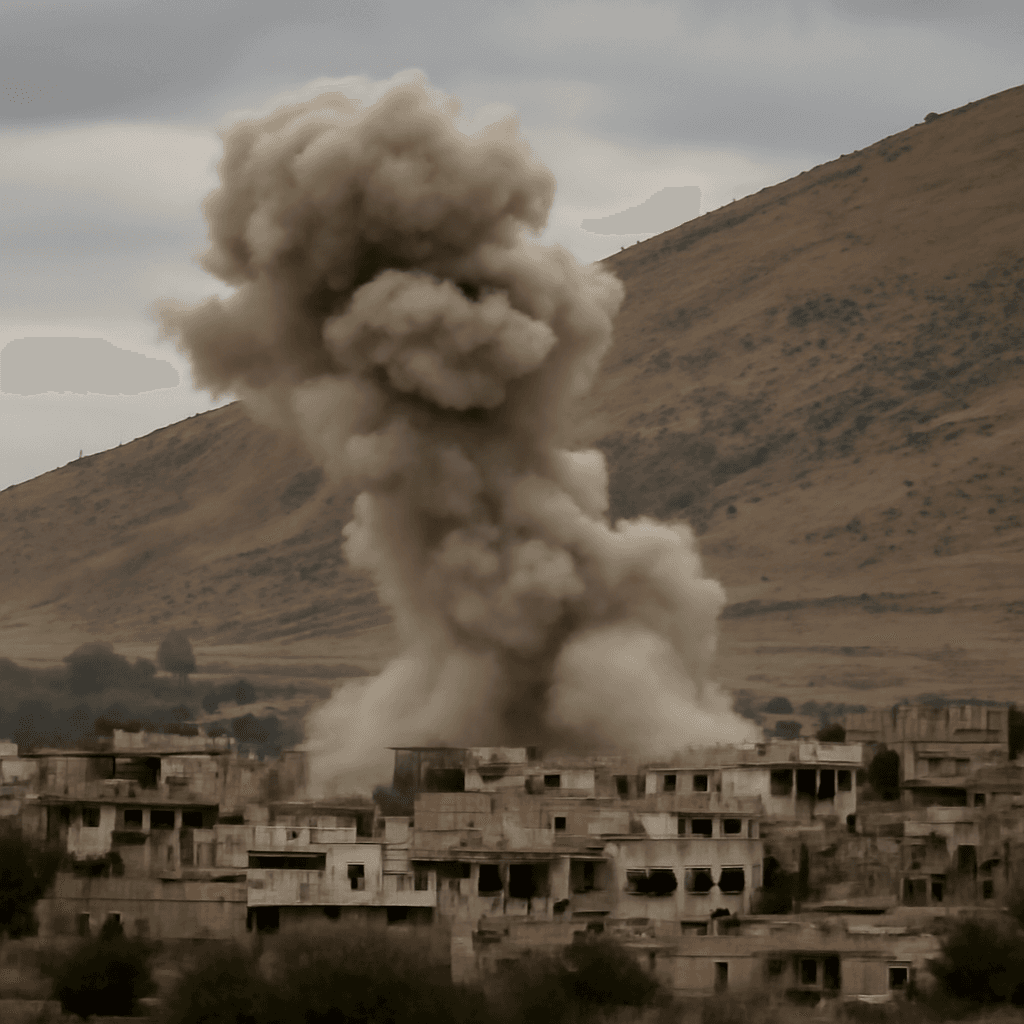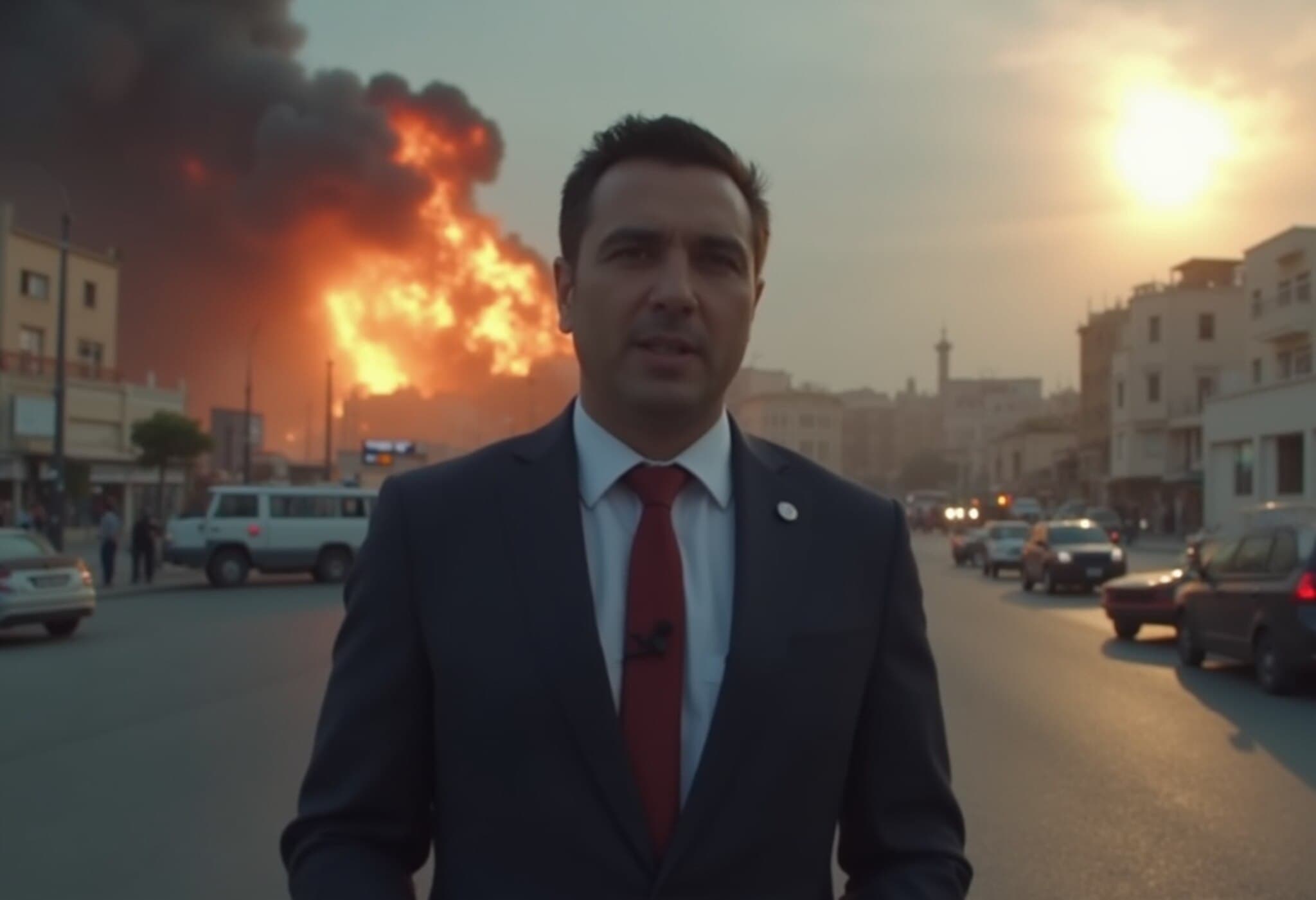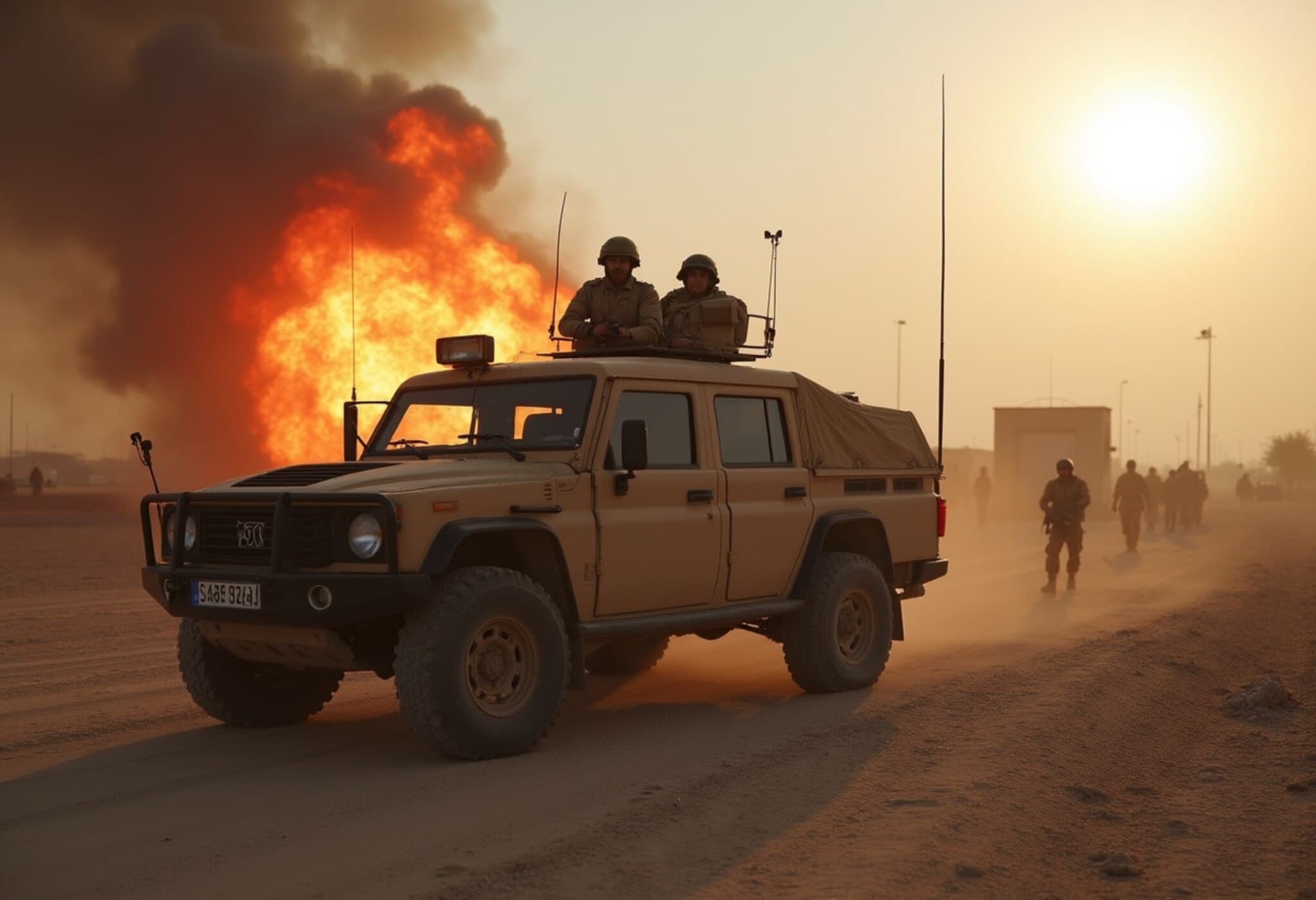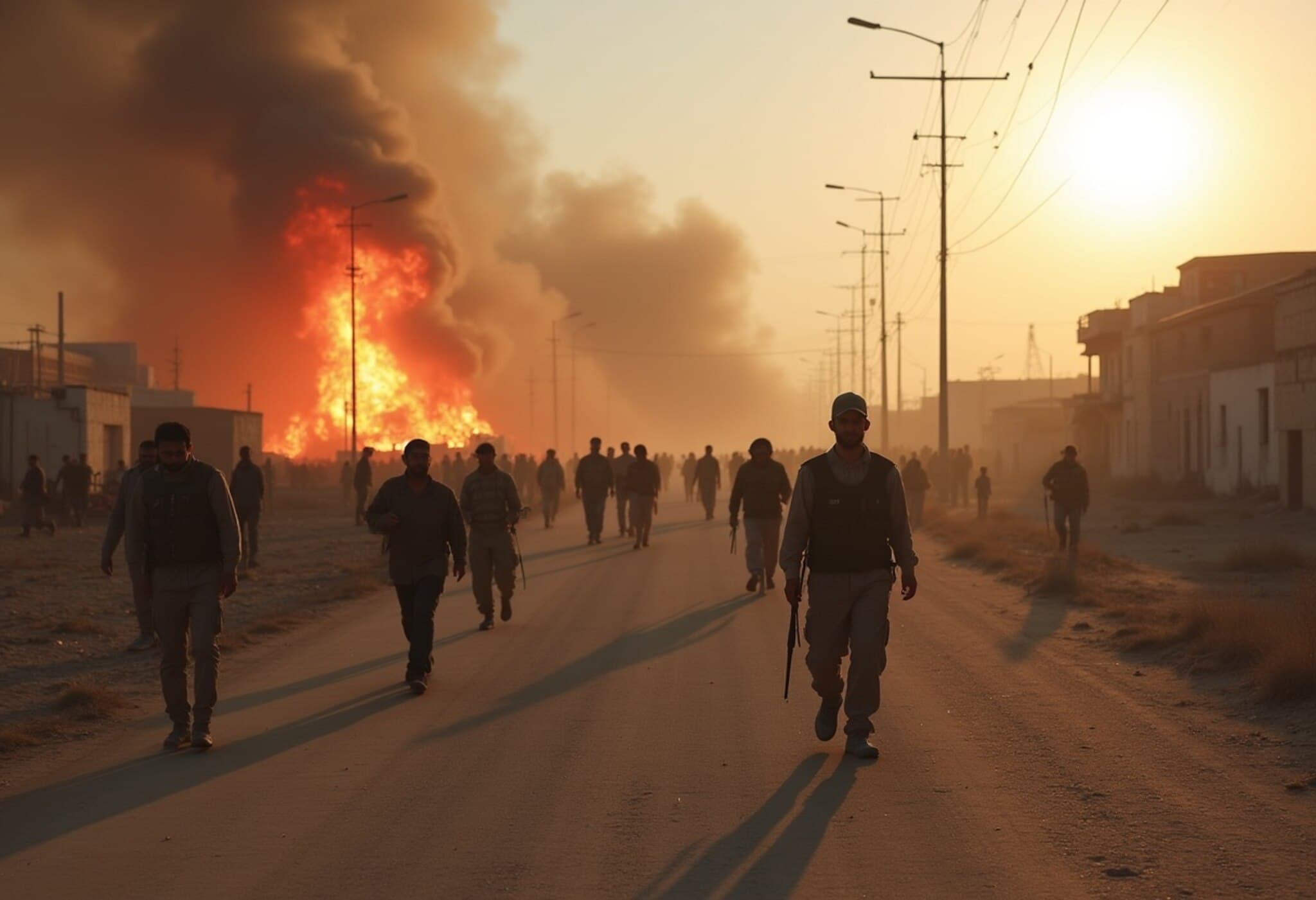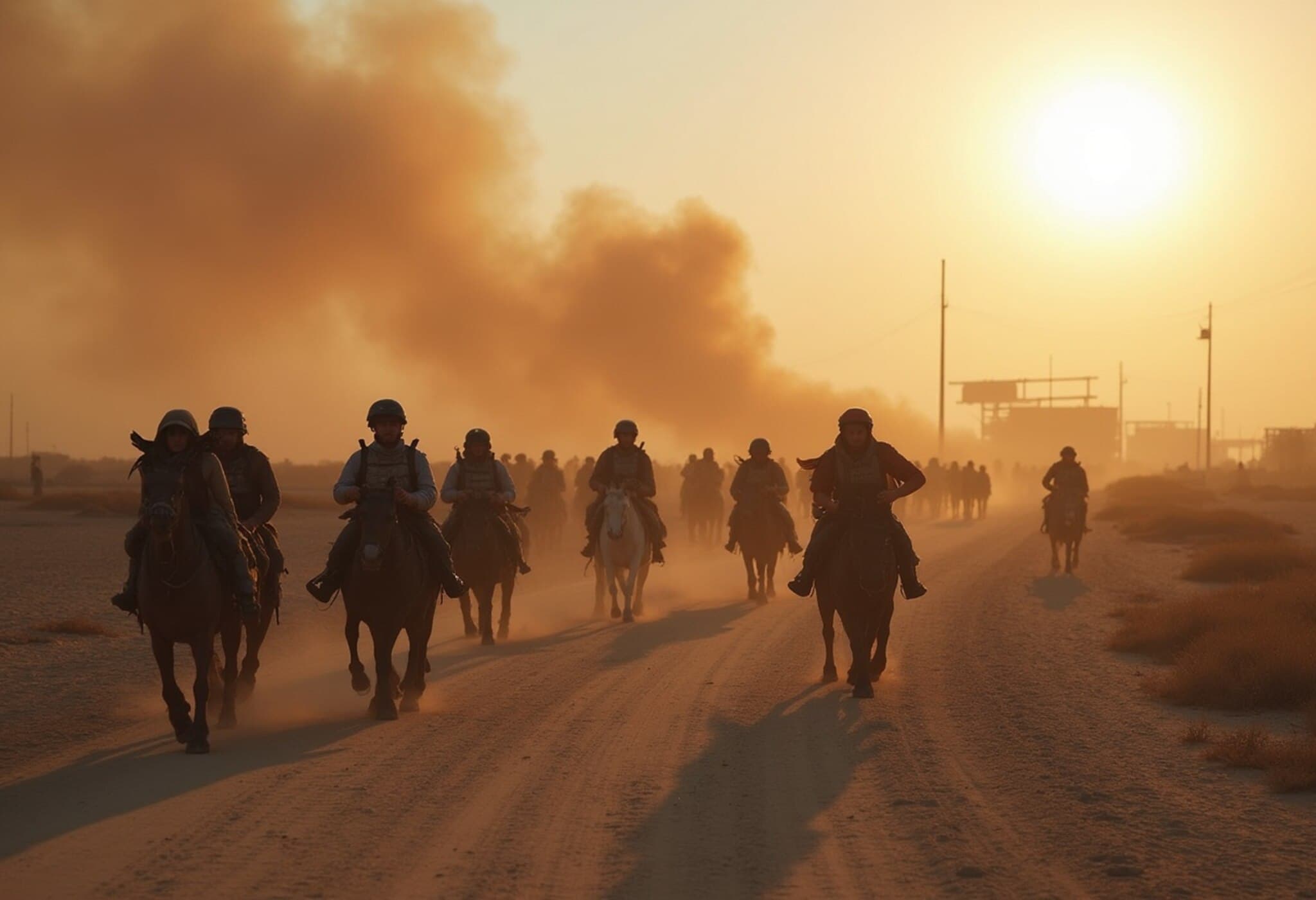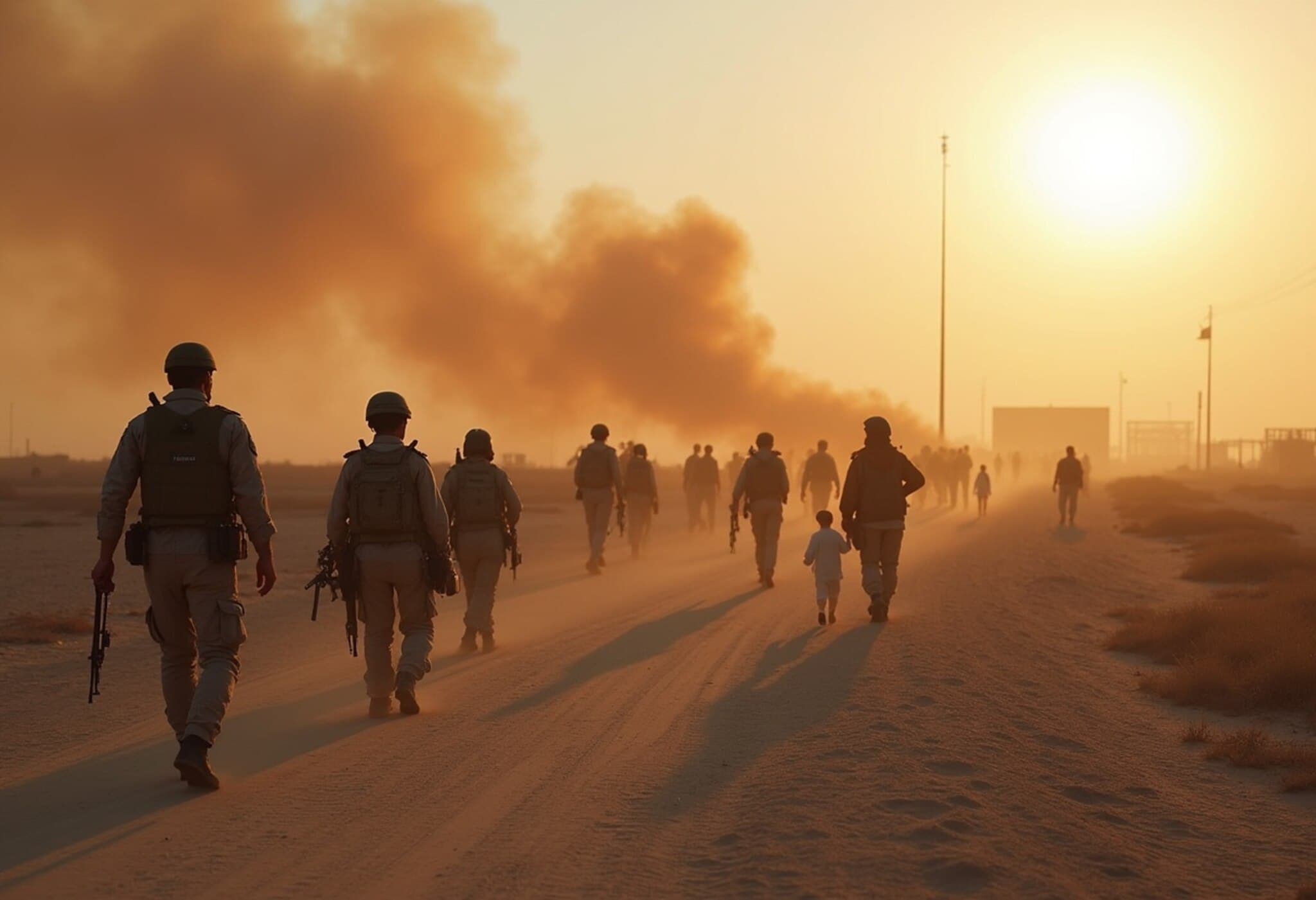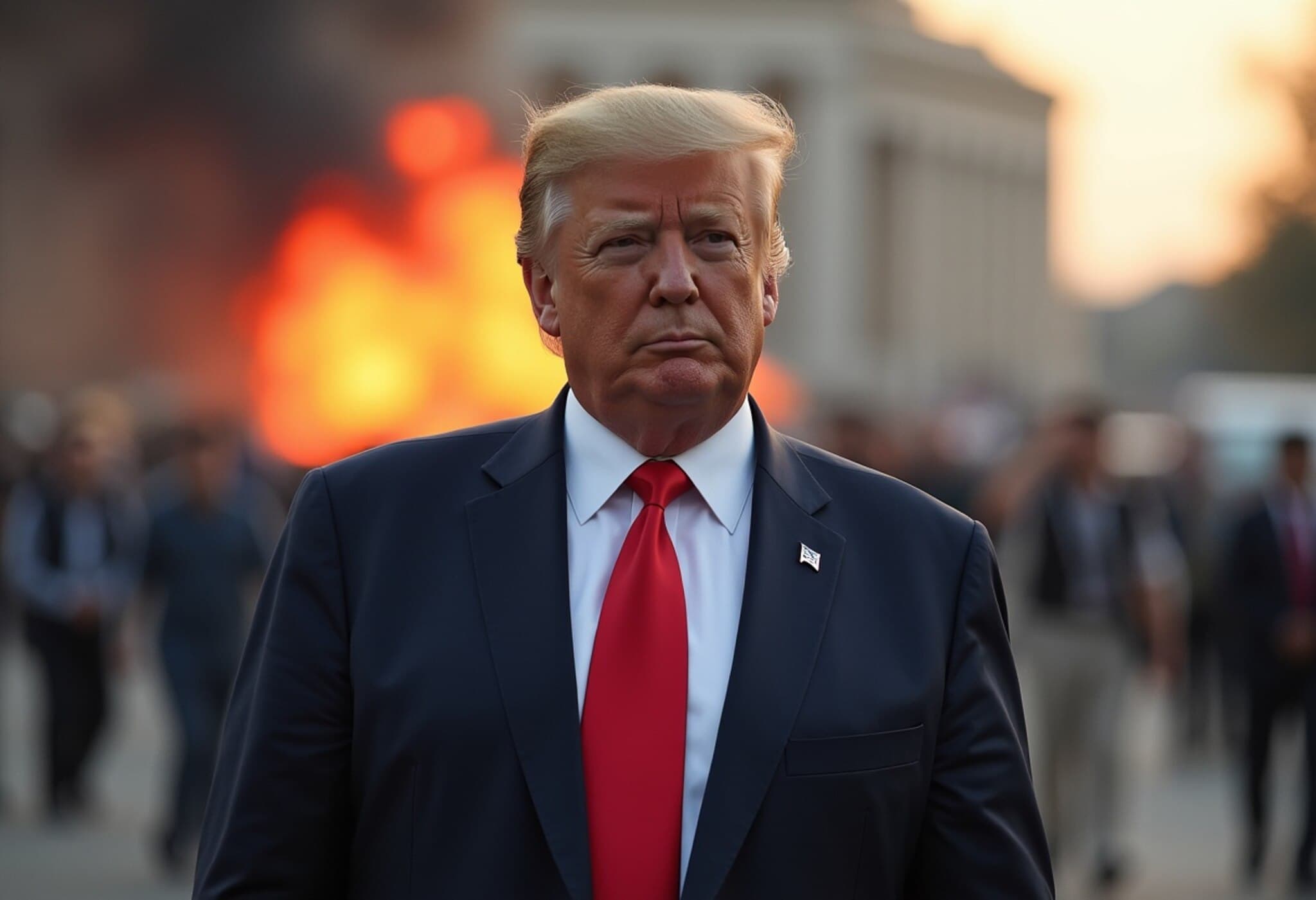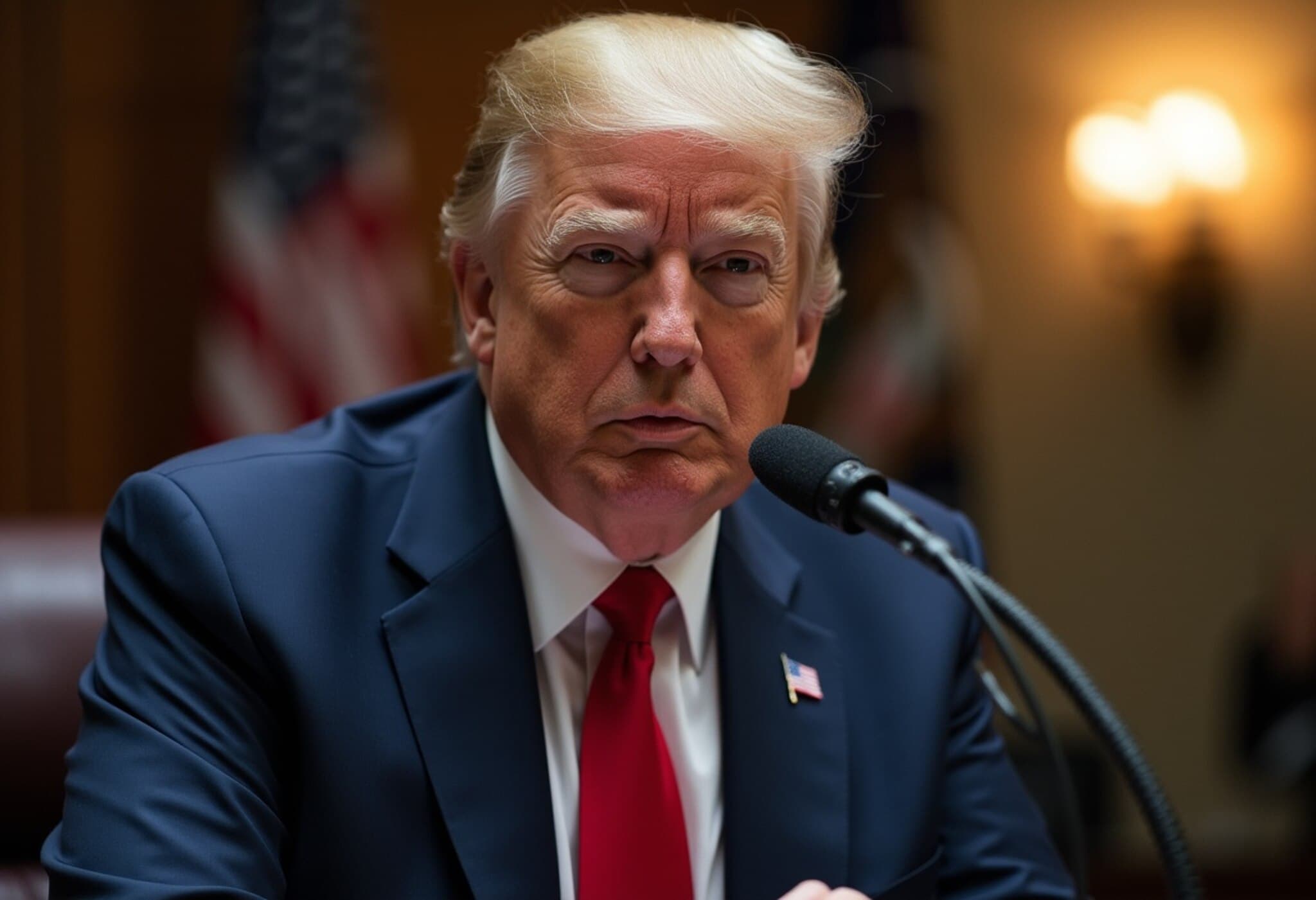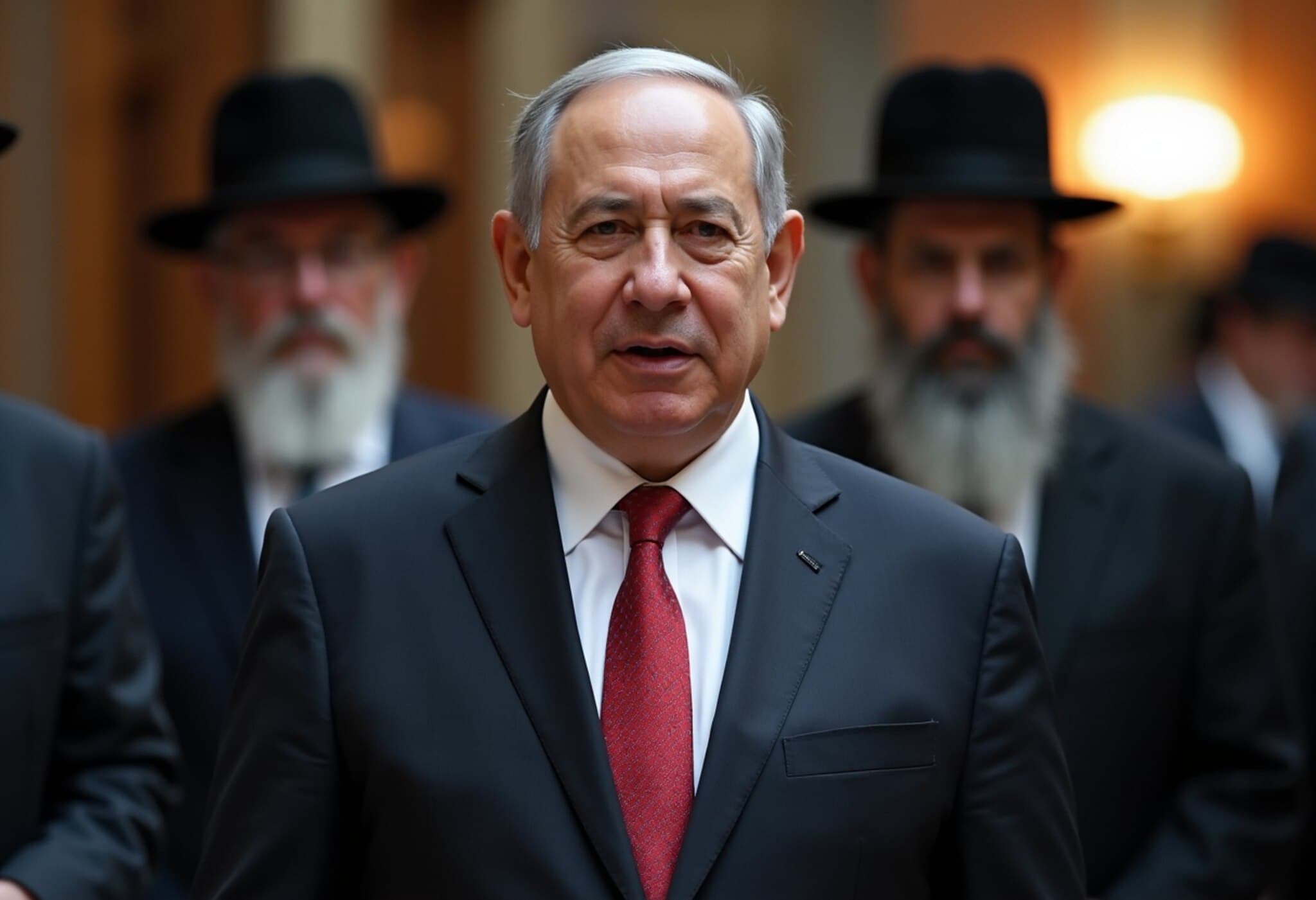Israel’s Airstrikes Deep in Damascus: A Strategic Move Amid Sweida Crisis
On July 16, 2025, Israel executed rare and targeted airstrikes deep into the heart of Damascus, striking Syria’s military headquarters and a location adjacent to the presidential palace. According to the Israel Defense Forces (IDF), these strikes were deliberately aimed at protecting Syria's Druze minority amid intensifying clashes in southern Syria's Sweida province.
These military actions mark one of the most significant Israeli intrusions into Syrian airspace in recent years, underscoring Israel's heightened concerns over security dynamics near its borders.
Targets and Immediate Impact of the Strikes
The IDF identified the key targets as the entrance to Syria’s General Staff compound and a military installation near the presidential palace. Syrian state media confirmed the strikes resulted in at least one fatality and 18 injuries. Aerial footage and images from agencies like AFP revealed visible damage to government buildings with thick smoke billowing over the capital.
Why Israel is Intensifying Its Role in Syria
Israeli Defense Minister Israel Katz issued a stern warning to Damascus: “Leave the Druze in Sweida alone or face painful consequences.” Further, Israeli forces have repositioned from Gaza to the Syrian border, signaling a strategic pivot to prepare for any potential escalation or spillover of violence across the northern frontier.
Prime Minister Benjamin Netanyahu reaffirmed Israel’s stance, emphasizing that southern Syria must remain demilitarized, both to protect Israeli territory and to safeguard the Druze community — a religious minority which also comprises a significant population within Israel’s own borders.
Understanding the Sweida Clashes: A Community on Edge
The city of Sweida, predominantly inhabited by the Druze minority, has witnessed fierce fighting between local Druze armed groups and Syrian government forces since earlier this week. Eyewitnesses accuse Syrian troops of siding with Bedouin tribes against the Druze fighters — a move that undermines ceasefire attempts and intensifies communal tensions.
The UK-based Syrian Observatory for Human Rights reports over 300 deaths in Sweida province over recent days, including 27 Druze civilians allegedly executed by Syrian forces. Alarming videos circulated online show looting, destruction of homes, and abuse of Druze religious figures, illustrating a humanitarian crisis unfolding beneath the geopolitical headlines.
Renewed Ceasefire and Continuing Violence
After a brief ceasefire failed earlier, Syrian state media announced a new truce on Wednesday, coupled with the deployment of security checkpoints throughout Sweida city. Nonetheless, sporadic gunfire and clashes continue, casting doubts on the durability of peace efforts amid deep mistrust between factions.
Humanitarian Fallout and Regional Implications
In the midst of the chaos, Druze civilians are living in fear for their families, caught between conflicting forces. Communications blackouts exacerbate the crisis, with burning homes and reports of summary executions fueling panic. Druze leaders have framed this conflict as an “existential battle” — a fight not only for survival but for their community’s future in Syria.
The international community, including the United States, France, and the European Union, has voiced strong condemnation of the violence. US Secretary of State Marco Rubio expressed “deep concern” over reports of attacks on civilians, signaling potential diplomatic pressures ahead.
The Druze Factor: Minority Rights and Israel’s Calculus
The Druze, numbering around one million worldwide, mostly reside across Syria, Lebanon, and Israel. Their historical relationship with ruling governments in Syria has been fraught, balancing survival amidst shifting alliances and conflict.
Since the rise of Islamist-led forces replacing Bashar al-Assad’s faction in late 2024, fears of minority marginalization in Syria have escalated — creating a volatile environment that Israel closely monitors given its proximity and security concerns.
Israel views its military strikes in Syria as twofold: a protective act for the vulnerable Druze minority, and a strategic maneuver to prevent hostile groups from establishing footholds near the Israeli-controlled Golan Heights.
Looking Ahead: Stability or Further Escalation?
Defense Minister Katz’s warning that Israel may intensify its military response if Syrian forces do not withdraw from Sweida suggests the current crisis is far from resolved. Despite ceasefire declarations, on-the-ground realities include ongoing skirmishes, civilian suffering, and a devastated local infrastructure.
Meanwhile, Netanyahu’s government remains committed to enforcing a buffer zone in southern Syria, emphasizing the protection of the Druze community as a national security imperative.
Expert Insights and Questions Raised
- How sustainable is Israel’s dual role as a regional security actor and protector of a minority in Syria?
- What mechanisms can international actors employ to foster lasting peace in Sweida beyond military interventions?
- Could this crisis signal an emerging pattern where minority conflicts in Syria draw increased external involvement?
Editor’s Note:
The recent airstrikes by Israel deep into Damascus and the deadly clashes in the Druze-majority Sweida reflect the complex interplay of local sectarian tensions and broader regional security concerns. While Israel stresses the protection of its Druze brethren and territorial integrity, the ongoing violence raises urgent questions about the future stability of southern Syria and the humanitarian toll on minorities caught in the crossfire. As diplomatic efforts falter and ceasefires remain fragile, the international community faces the challenge of balancing strategic interests with pressing humanitarian needs.










